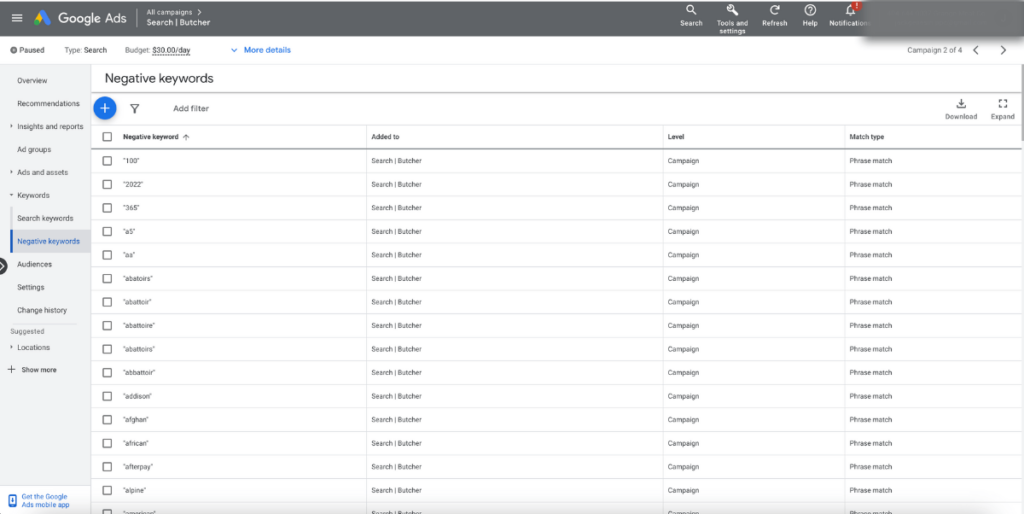Advertising through Google Ads has changed how businesses reach their customers. Now, more than ever, it’s important to get it right, from the start, and sidestep costly mistakes. Given that Australia is a digitally-advanced market, even beginners can’t afford to slip up. Knowing which mistakes to avoid in Google Ads can be the defining line between a successful campaign and an expensive misstep. Here’s what NOT to do:
Don’t Ignore Local Nuances
Australia boasts a unique cultural landscape. One of the pivotal advertising mistakes in Google Ads is sidelining local preferences. A generic campaign might not resonate with Australians, leading to missed opportunities. Localisation isn’t just a good strategy; it’s one of the Google Ads best strategies.
Ignoring cultural norms or misinterpreting them can lead to unintentional offences or confusion. By not aligning with local trends, habits, or preferences, brands can miss out on leveraging powerful engagement triggers.
Remember that while a brand might have global appeal, its messaging needs to touch the hearts of individuals. Recognising and integrating local nuances not only prevents missteps but also endears a brand to its audience, making them feel seen, understood, and valued.
Don’t Overlook the Power of Negative Keywords
Remember that in the world of Google Ads, keywords act as the beacon, drawing in users based on their search queries. Yet, while positive keywords tell Google where to show your ads, negative keywords inform it where not to. The oversight of negative keywords is a prevalent pitfall, even for seasoned advertisers.

What Are Negative Keywords?
At its core, a negative keyword is a type of keyword that prevents your ad from being triggered by a certain word or phrase. For example, if you’re selling high-end watches, you might choose “cheap” as a negative keyword to ensure that individuals searching for budget options don’t click on your ad.
Why Do Negative Keywords Matter?
Budget Conservation: Each click on your ad costs money. By filtering out irrelevant searches through negative keywords, you can ensure that your budget is spent on potential customers genuinely interested in your offering.
Improved Click-Through Rate (CTR): When your ad is shown to a more relevant audience, the chances of them clicking on it increase. A higher CTR can subsequently improve your ad’s quality score, which can reduce your cost per click.
Enhanced Conversion Rates: It’s not just about getting clicks; it’s about getting the right clicks. A person searching for a product or service you don’t offer is less likely to convert. By using negative keywords, you can direct your ads towards users who are more likely to take desired actions, whether that’s making a purchase, signing up, or any other conversion goal.
Common Mistakes in Using Negative Keywords
Overuse: While it’s essential to be comprehensive, adding too many negative keywords can restrict your ad’s visibility excessively. It’s crucial to strike a balance.
Being Overly Broad: If you’re using broad match negative keywords, be cautious. You might unintentionally block relevant searches. For instance, if you sell luxury shoes and use “cheap” as a broad match negative keyword, you might block searches like “best value luxury shoes.”
Not Regularly Reviewing: The relevance of negative keywords can change over time, with shifts in market trends, product offerings, and user behaviour. Regularly reviewing and updating your list can ensure it remains effective.
Harnessing the Power of Negative Keywords
To get the most out of negative keywords, follow these simple steps:
Keyword Research: Use tools like Google’s Keyword Planner to see what terms associated with your positive keywords might be irrelevant to your campaign.
Monitor Search Query Reports: Regularly check the actual queries that triggered your ads. Identify and add irrelevant terms to your negative keyword list.
Regularly Update and Refine: As mentioned, trends and behaviours change. Ensure your negative keyword list remains updated to cater to these shifts.
Don’t Forget About Mobile Optimisation
One of the most pervasive Google Ads campaigns common mistakes is disregarding mobile users. Over the past few years, mobile searches have exponentially increased. With smartphones becoming more advanced and data plans more affordable, people are finding it more convenient to use their mobile devices for quick searches, shopping, and even for consuming content. In fact, studies have shown that mobile searches have outpaced desktop searches in numerous regions, including Australia.

Optimising Your Google Ads for Better Mobile Clicks and Conversions
Responsive Design: Ensure your website or landing page design is responsive, meaning it adapts seamlessly to various screen sizes and orientations.
Page Load Speed: Mobile users are often on-the-go, and they expect quick load times. Use tools like Google’s PageSpeed Insights to gauge and improve your mobile site’s speed.
Simplify and Streamline: Due to smaller screen sizes, it’s essential to have clear, concise content with easily clickable buttons and an intuitive navigation structure.
Regular Testing: Regularly test your mobile ads and landing pages on various devices to ensure a consistent and optimal user experience.
Don’t Just Set it and Forget It
One of the often-heard Google Ads campaigns warnings is the risk of leaving your campaign unmonitored. It’s easy and tempting for even advanced Google Ads marketers to fall into this trap – here’s why:
Perceived Simplicity: At face value, once a Google Ads campaign is live, it may seem like the hard work is done. Initial metrics can be encouraging, leading advertisers to believe that ongoing management is unnecessary.
Time Constraints: Businesses often have myriad operations to manage. Once a campaign is running, it might feel efficient to direct focus elsewhere.
Over-reliance on Automation: While automation tools are invaluable, relying solely on them without human oversight can miss nuanced insights.
Transitioning from “Setting and Forgetting” to “Optimising and Succeeding”
To truly leverage the power of Google Ads, continuous optimisation is key. Here’s how to remain proactive:
Regular Monitoring: Schedule consistent check-ins for your campaign, whether daily, weekly, or bi-weekly, depending on your business scale and campaign size.
Embrace A/B Testing: Continuously test different ad copies, visuals, and call to action buttons to identify what resonates most with your audience.
Engage with Analytics: Deep dive into Google Ads analytics to understand user behaviour, click-through rates, conversion rates, and more. Use these insights to refine your approach.
Adjust Budgets: Based on performance data, redistribute budgets to higher-performing ads and reduce spend on underperforming ones.
Stay Updated: The digital advertising landscape is ever-evolving. Regularly update yourself on the latest features, tools, and best practices in Google Ads to ensure you’re leveraging all available advantages.
Don’t Settle for Boring Ad Copy
Among the common flaws in Google Ads campaigns is lacklustre ad copy. Your message needs to capture attention and compel clicks. It’s not just about avoiding mistakes; it’s about leveraging Google Ads’ best strategies to create compelling narratives.
So what kinds of things make your ad copy ineffective?
Vagueness: Ad copy that is too generic or lacks a clear message can leave users confused or uninterested.
Lack of Unique Selling Proposition (USP): Failing to highlight what makes your product or service unique means you blend in with the competition.
Overly Complex Language: Using jargon or complex terms can alienate users. Your copy should be easily understood by your target audience.
Missing Call to Action (CTA): An ad without a clear CTA misses the opportunity to guide users towards the desired action.
Not Addressing the User’s Needs or Pain Points: Effective copy often speaks directly to the user’s needs, desires, or challenges.
Best Practices for the Best Possible Ad Copy
Know Your Audience: Understand their needs, preferences, and pain points. Tailor your message to resonate with them.
Highlight Benefits, Not Just Features: Instead of just listing what your product does, convey how it can benefit the user.
Keep It Concise: With limited space, every word must count. Be direct and to the point.
Utilise Action Words: Verbs like “discover,” “grab,” “start,” or “buy” can energise your copy and motivate users to act.
Test and Iterate: Use A/B testing to compare different versions of ad copy to find out what resonates most with your audience.
Stay True to Your Brand: Ensure your ad copy aligns with your brand voice and values. Consistency builds trust.
Your Google Ads Questions Answered
Q: Which of the following are the common mistakes in Google Ads?
A: Beyond the mentioned errors, common missteps include improper budget setting, neglecting Ad Extensions, misjudged bidding, misunderstanding keyword match types, and failing to target the appropriate audience.
Q: What are some inherent flaws in ads?
A: In addition to the above, many campaigns suffer from mismatched landing pages, utilising irrelevant keywords, and neglecting the goldmine of insights from analytics.
Q: What ads are not allowed on Google Ads?
A: Google maintains stringent policies, prohibiting misleading content, products or services deemed dangerous (like explosives or certain drugs), hate speech, unlabelled adult content, and copyright-infringing materials.
Q: How to sidestep these common mistakes in Google Ads?
A: Stay abreast of the latest Google Ads best strategies through continuous learning. Make time for regular campaign reviews, trust in analytics, consistently test and optimise, and when needed, seek expertise. A consultation with a Google Ads expert, especially one acquainted with the Australian market, can offer invaluable insights.
Moving Beyond Google Ads Mistakes
Now that you have a better idea of how to avoid the most common advertising mistakes in Google Ads, what’s next? We’ve got a library full of advice you’ll want to read before you launch, including our popular Campaign Checklist and Beginner’s Guide. If you’re looking for Essential Tips on how to Maximise ROI or make the most of your Budget Optimisation, we’ve got you covered there too. We’ve also included a thorough step-by-step writeup on how to get the most out of Ad Extensions.
Schedule your free one-on-one consultation with our Google Ads experts to learn more about how we can help you reach more customers in Australia with targeted paid advertising!




